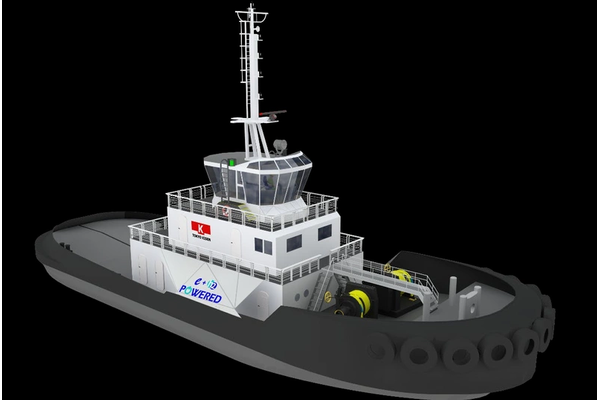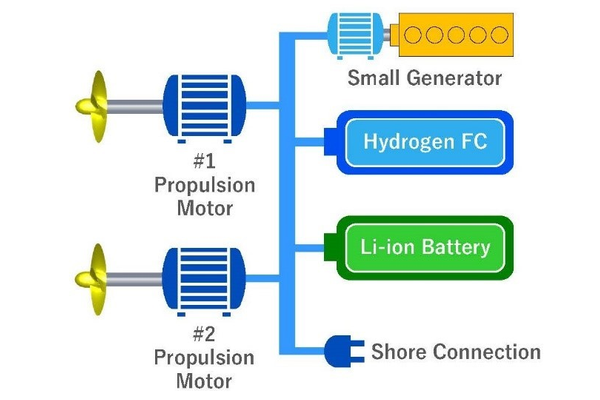

Tokyo Kisen Co., Ltd. and e5 Lab Inc. have jointly developed the new concept design of “e5 Tug,” electric propulsion harbor tugboat powered by large-capacity battery and a hydrogen fuel cell.
The e5 Tug is a harbor tug fully electrified and designed to minimize environmental footprint and is equipped with a propulsion system running on “e5 powertrain platform”, devised and planned by e5 Lab, which utilizes a large-capacity battery system as a main power source and a hydrogen fuel cell and generator as the auxiliary power source.
This electric propulsion system will ensure sufficient bollard pull and continuous cruising time necessary for harbor tugboat which requires a large-capacity power to function. Furthermore, CO2 emission is minimized by incorporating fuel cell.
This joint project is drawing upon knowledge and experience of Tokyo Kisen as a tugboat operator and e5 Lab is undertaking concept planning / development, design, and project management.
We will proceed with the project by seeking advice from the Ministry of Land, Infrastructure, Transport and Tourism, ClassNK, and others for the regulatory compliance. After the final investment decision we aim to launch the tug for commercial operations at Yokohama Port and Kawasaki Port in 2022.
e5 tug outline
Main features of e5 Tug
Environmental performance - It reduces CO2 emissions in all operational phases such as push / pull, transit and standby (it can also be reduced on the basis of Well-to-Propeller measure).
Contribution at the time of disasters - It has a function of power supply from ship to shore in the event of a disaster and can be used as an emergency power source.
Future scalability - Fully electrified powertrains can adopt the most suitable energy sources (lithium-ion battery, hydrogen fuel cell, all-solid-state battery, LNG generators, etc.) in accordance with technological progress.
In the future, it will be possible to achieve zero emissions on Well-to-Propeller basis in combination with renewable energy.



